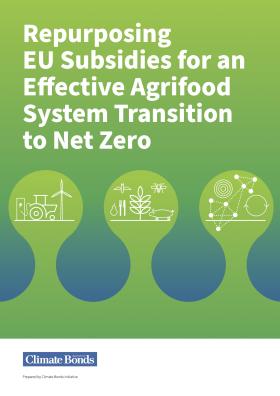When it comes to climate change, agriculture is one of the biggest elephants in the room. It is a massive emitter – responsible for 11% of the EU’s GHG emissions – but also one of the first sectors to feel the heat. From droughts to floods, farmers are already seeing the effects of a changing climate. The good news? With the right policies and investments, agriculture can go from being part of the problem to a huge part of the solution. That is the message of the latest Climate Bonds policy paper, "Repurposing EU Subsidies for an Effective Agrifood System Transition to Net Zero."
The EU agricultural sector has achieved an emissions reduction of just 3% from 2005-2021; a decrease which falls significantly short of the EU’s climate targets. This is despite making several amendments to policies with the objective of achieving these targets, such as the Effort Sharing Regulation; Land use, Land-Use Change, and Forestry Regulation (LULUCF), and a more significant climate focus given to the Common Agriculture Policy (CAP).
However, a significant gap remains in achieving the EU 2030 emissions reduction and 2050 climate neutrality targets which require more ambitious policies that also encompass just transition elements. Indeed, tackling both the needs of farmers, consumer demands, and climate targets will define agrifood policies during the new European Commission mandate.
The agricultural sector is not currently included in the EU Taxonomy. Crucially, this absence of a clear definition of sustainable activities and transition pathways for the EU agricultural sector makes it more difficult to align agriculture policies, including subsidies to the sector, with climate objectives.
Policymakers have a critical role to play in transforming agrifood systems without compromising economic prosperity and now is the time to ensure the CAP fully aligns with the EU climate targets, supporting farmers on their transition journey. The new EU Commission is already set to undertake a first performance review of each CAP strategic plan in 2025, which represents an opportunity to evaluate and measure the current gaps in the CAP alignment with EU climate targets and to restructure the CAP. The new EU Commission will need to simplify and reform the subsidy programmes, designing a comprehensive policy approach to put the European agricultural sector on a credible pathway towards net zero, while ensuring a just transition. Given the limited amount of EU financial resources, an examination and repurposing of environmentally harmful programmes is required to achieve the net-zero transition and more efficiently allocate such funding.
